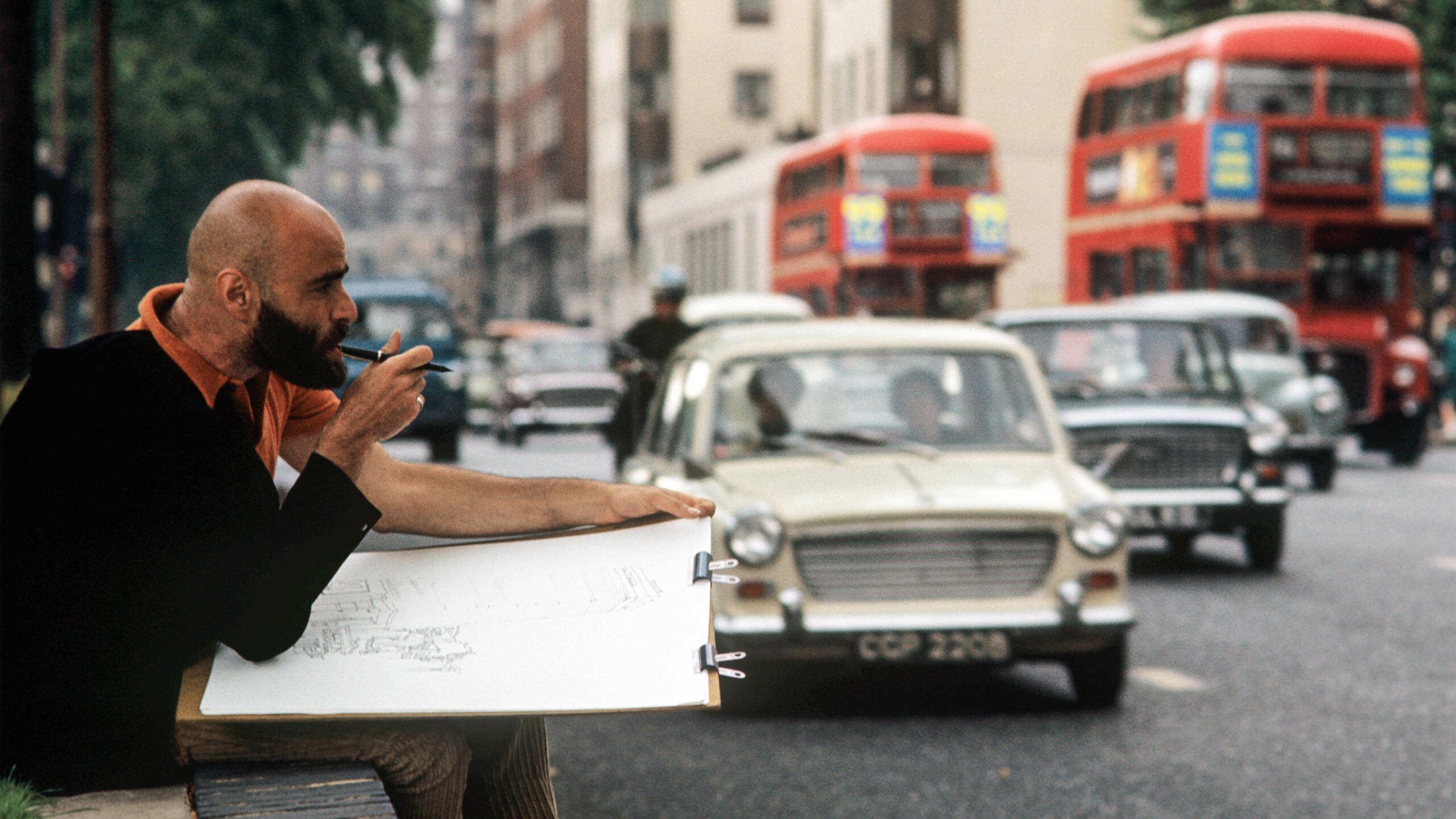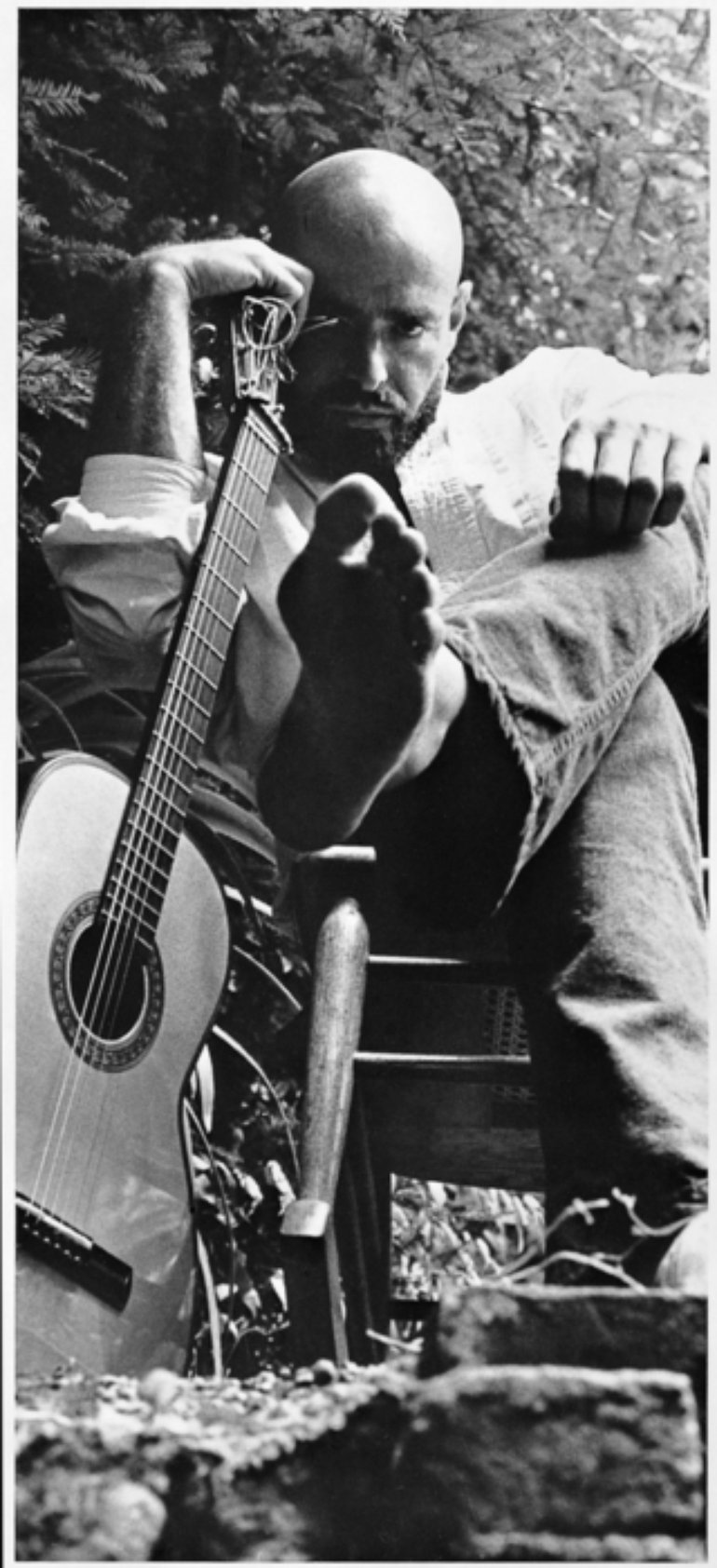Where Shel Silverstein’s Sidewalk Begins & Playboy’s Poet Ends
IF YOU grew up in Los Angeles, then you probably won’t dispute the purported fact that everyone’s an actor, a writer, an artist, or a musician. And if not, then they know somebody who is. A fair bet says their mom even took at trip to Woodstock once. At least, she thinks it might have been Woodstock, but isn’t exactly certain. Everyone simply gives her the benefit of the doubt. For an added bonus, there’s a movie script or a demo tape in the trunk of their Honda Civic. Elsewhere in the world, everyone’s reportedly a poet or related to one. Haven’t you heard? Uncle Willie published his very own chapbook and the local chapter of the Red Hat Society raves on and on about it. If this were the case, you’d think poetry would more empty shelves at Walmart than toilet paper. Truth is, self-declared poets rarely if ever get around to reading other people’s poetry, because nobody wants to read poetry unless it’s their own. The average American would rather sit around eating kale, watching glamorized housewives read off cooking recipes on the Food Network. That is, unless you’re Shel Silverstein. Because everyone has read Silverstein at one time or another.
I recently read somewhere that James Franco was in talks to play Shel Silverstein in a movie called A Boy Named Shel. Franco played Allen Ginsberg in a 2010 movie called Howl. Ginsberg was the worst poet in human history, but also a spook. It was almost like the CIA placed bets on how bad they could make the poetry and still sell America on it. And it got me thinking. Why are there so many Shel Silverstein books everywhere, and is Franco making a habit of playing poetry-writing spooks on the big screen? Shel Silverstein is everywhere. I dare you not to find a copy of Shel Silverstein poetry in the children’s section of your local book store. That should be a red flag. Is the world strapped of people capable of writing poetry to children? The answer is no. You were read Shel Silverstein in school. Admit it, you probably even read Shel Silverstein to your own child at bedtime, hoping it might cultivate the poetic arts in your home.
Problem is, he’s not a very good poet. I mean, he’s okay. Seriously though, that chapbook uncle Willie self-published and which awkwardly sits on your parents bookshelf in the guest bedroom is probably as good as Silverstein—if not better. If you’ve actually managed to read anyone beyond Silverstein then you may in fact concur. He’s not great. If we’re being honest, he’s a creepy looking dude with a guitar.
So, why is Shel Silverstein our go-to poet for children?

I DECIDED to turn to Wikipedia for answers. And learned very little.
The story of his success goes like this. Ursula Nordstrom, editor-in-chief of juvenile books at Harper & Row, insisted that Shel Silverstein write children’s poetry. This was strange, I thought, since Wikipedia quickly admits that Silverstein had never studied the poetry of others before. It actually proves my suspicions. Silverstein was not a very good poet. The poet furthermore told a reporter that he was dragged by a friend, writer Tomi Ungerer, kicking and screaming into her office. According to Silverstein’s own recollection of events, it was Nordstrom who convinced him he could and should write children’s poetry. In 1964, their resulting partnership delivered an immediate childhood classic, The Giving Tree. Maybe there was nothing to see here, I thought. Perhaps Nordstrom simply knew raw, unrefined talent when he was dragged by the wrists, kicking and screaming through her office door.
Then again, perhaps I had missed something.
I decided to give his Wiki article a second read. This time I stumbled right over the word and landed on my face. Playboy.
Wait, Shel Silverstein was a cartoonist for Playboy from 1957 through the mid-1970s? Was it by his own choice? I mean, was he drug into the Playboy Mansion and held hostage? Wikipedia says little to nothing else of his terrible ordeal. I then turned to Google for assistance. To my absolute delight, Playboy has an entire article devoted to him, and its written by Sasha Cohen.
Here’s what I gathered.
The earlier story of his success, some several years before Harper & Row, goes something like this. Shel Silverstein walked into Playboy’s Chicago office in 1956 and dropped off an unsolicited portfolio. They’re obliged to say unsolicited, I’m sure. And at any rate, he wasn’t kicking and screaming this time. Hugh Hefner quickly bought several drawings for the magazine, and the rest is history. Their partnership would span two decades, which saw Silverstein traveling the world in order to pursue and simultaneously push the Playboy agenda. Remember the word agenda. This is Playboy. So, we’re talking Height-Ashbury, Greenwich Village, a Pennsylvania nudist colony, and Cherry Grove, a gay resort in New York, all of which transpired during what Cohen calls “a period of potent social transformation.” Thank you for being a part of it, Playboy.
His readers praised him for his “total absence of moralizing.”
Remember that as well.
As part of Hef’s inner circle, Silverstein spent weeks, sometimes months at a time, lurking in the infamous Playboy Mansion, usually carrying the very guitar which landed on the back cover of his children’s poetry books. And having sex. Lots and lots of sex. Orgies. Probably on carpets made of bear skin. Fellow Playboy cartoonist Skip Williamson told his biographer, Lisa Rogak, that Silverstein “knew his way around a skirt.” His favorite pick-up line involved asking beautiful women he encountered on the street if they wanted to be a Playmate. If and when they expressed interest, Silverstein would pull out a measuring tape to record her dimensions.
“Shel was not handsome,” Lisa Rogak wrote. “Maybe it was his eyes. They would twinkle and pierce simultaneously, giving you the impression that he knew something you didn’t.” Whatever their reasons, women flocked to Silverstein. “They wanted him. Badly.”
Here’s another interesting tidbit. Silverstein wrote many of his children’s works while inside the Mansion. Perhaps it is best that we enter in then and take a peek.

THERE HE is. Shel Silverstein. Seated in the Playboy Mansion with his guitar, having probably just finished another children’s book. Surrounded by bunnies. Bunnies everywhere. And Hugh Hefner. Also Bill Cosby. And I know what you may be thinking about Bill Cosby. The media wants you to conclude he’s a casting-couch rapist of his own design, and they want you to think it has absolutely nothing to do with the Playboy Mansion. Oh sure, Judy Huth claimed Bill Cosby sexually abused her in 1974, inside the Playboy Mansion, while she was still 15. Has anyone in the CIA-controlled media asked the next logical question: What the hell was a 15 year-old girl doing inside Hugh Hefner’s pleasure dome? Why else would anybody go into the Playboy Mansion except to pop pills, take their clothes off, and have sex with as many people as possible, all while being videotaped by the Hef? Bill Cosby spent an erogenous amount of time in the Mansion. That alone makes him a rapist. We’re constantly being dealt the underhandedness of inverted realities. I’m willing to bet he didn’t rape any of his final five accusers. His trial read off precisely like a Hollywood script.
This is the Playboy Mansion we’re talking about. Hedonistic headquarters. Hefner was a spook. There were underground tunnels leading to the homes of Warren Beatty, James Caan, Kirk Douglas, and Jack Nicholson—all spooks. From these corridors, people could slip about in secret as they pleased. The CIA was taping everyone and blackmailing them for life. Roman Polanski probably only made the mistake of getting caught with a 13-year-old girl in Jack Nicholson’s jacuzzi when, for all I know, they’d enticed her over from the Playboy Mansion. President Donald Trump partied at the Playboy Mansion. In every single picture, he advertises himself as a controller. Attempt if you can to consider the long list—at least five decades worth—of celebrities and political elite who entered Hef’s pleasure palace. It probably reads off like a who’s-who in the secret Hollywood sex cult that runs the world.

Playboy was a CIA operation which succeeded, in masterful strokes, at sexualizing “the girl next door” rather than the unattainable Hollywood diva. How did this translate for the average pimple-faced male? The CIA wanted men everywhere to fantasize undressing the average housewife across the street until the discomfort of expression, real human communication and interaction, gave way to foraging for refuge in masturbation. If we’re attempting to deal in inverted reality, then let’s talk about the Playboy centerfold. Hefner humanized the average woman by conjuring her primal sex appeal. When the pin-up exposes her breasts, be sure to look northward to her glazed eyes. Mm-hmm. She’s bearing it all while in a trance. That’s because the Playboy Mansion is a bunny-nest for mind control. Mk-Ultra.
They’re probably all Mk-Ultra’s. Every Miss September. Every Miss April. Name a year. Any given month. Every centerfold. Mk-Ultra. Brooke Shields was photographed nude in the Playboy Mansion in 1975. She was ten years-old at the time and pimped out by her mother. Within three years, Shields was paired up with Michael Jackson. And just to prove to everyone who ultimately owned her, a very adult Brooke Shields returned to Playboy in October of 1996, and landed the front cover. Remind yourself, who was on the first cover of Playboy? Marilyn Monroe. Mm-hmm. Mk-Ultra.

BY NOW you should finally be asking yourself, “Why would Ursula Nordstrom want a Playboy illustrator to write poetry for children?” For the same reason that NBC would transform Bill Cosby into America’s dad.
Wikipedia has an article on Nordstrom, and it gives enough away in its first two sentences. We first learn that she was publisher and editor-in-chief of juvenile books at Harper & Row from 1940 to 1973. It then identifies Nordstrom as being “credited with presiding over a transformation in children’s literature in which morality tales written for adult approval gave way to works that instead appealed to children’s imaginations and emotions.” If you’re paying attention, Wikipedia is practically screaming into your ear: Operation Mockingbird.
In my last article, I wrote about how the CIA impregnated and then financed America’s abstract expressionist Movement in order to altar our collective morality, and I made mention of the fact that the CIA controlled hundreds of media publications in order to wield the public consciousness. Ahem—Playboy. This is the same Operation Mockingbird that dressed Lucille Ball as a naughty and mischievous housewife during the advent of the television sitcom. It’s why actor Carey Grant would be cast in Hollywood’s leading roles. Grant once told reporter Joe Hyams that he preferred wearing women’s nylon panties under his pants when he traveled, “because they were easier to pack than men’s underwear and he could wash them out himself, which saved on hotel laundry bills.” But the real reason is that Grant was a cross-dressing homosexual who played the part of a leading straight man. Hollywood is a weapon of inverted reality constantly employed against your subconscious. The CIA wants you to stare into the eyes—I mean, breasts—of a hypnotized bunny until you’re far too infertile to even touch your own wife.

IF WIKIPEDIA is telling us in bold print that Nordstrom transformed children’s literature from morality tales to those of raw imagination and emotion, much like Silverstein’s own work with Playboy, then we should probably take a look at her other Renaissance projects.
Nordstrom edited Where the Wild Things Are in 1963. I decided to read up on its author, Maurice Sendak (another conveniently linked Wiki article), and quickly gleaned the following information. Sendak was an atheist homosexual Jew who was in a fifty-year relationship with a Freudian doctor named Eugen Glynn, specializing in psychoanalysis. Another convenient link informed me that psychoanalysis views a person’s development as determined by often forgotten events in early childhood, rather than by inherited traits alone. Secondly, human behavior and cognition are largely determined by instinctual drives that are rooted in the unconscious. And thirdly, that unconsciousness is often discovered in our dreams. If you suspect I just described the plot to Where the Wild Things Are, then you’re probably correct.
We next learn that Nordstrom edited Harriet the Spy in 1964. Its author was Louise Fitzhugh. I found very little on her Wiki article that would advertise duplicity. But Wiki did throw me one bone. Blink and you’ll miss it. Near the end of her article I learned that Fitzhugh wrote “another young adult manuscript, Amelia, concerned two girls falling in love. This manuscript was not published and was later lost.” I had little choice but to turn to Google for more answers. Within minutes I learned that Harriet the Spy inspired an entire generation of lesbians, despite the fact that Harriet never once announces her sexual preferences. I furthermore ascertained that Fitzhugh wrote Amelia about the same time as Harriet the Spy, and that she was in a relationship with Alixe Gordin, a casting director for Hollywood. Some of Gordin’s claims to fame include The Devils Own, Prizzi’s Honor, Scarface, and The Taking of Pelham One Two Three. Might as well throw Gordin in with the spooks.
Silverstein. Sendak. And Fitzhugh. I have only looked up three of Nordstrom’s contributors and already I’m seeing precisely how children’s literature was used as a weapon to break up the family home. Artistic subtlety. Operation: Mockingbird. Perhaps Nordstrom chose Silverstein because, as Lisa Rogak details in A Boy Named Shel: The Life and Times of Shel Silverstein, it had something to do with the fact that his cartoons were second only to the centerfold. I don’t know. You tell me. Nordstrom was a spook, purposed with planting seeds into the very soft soil of youth.
Knowing what you now know, I’ll let you analyze the following poem on your own. It’s called, “Hug O’ War,” and was first published in Where the Sidewalk Ends. Try not to imagine Hugh Hefner reading it to your child in a robe.
I will not play at tug o’ war.
I’d rather play at hug o’ war,
Where everyone hugs
Instead of tugs,
Where everyone giggles
And rolls on the rug,
Where everyone kisses,
And everyone grins,
And everyone cuddles,
And everyone wins.
-Noel
JOIN OUR NEWSLETTER!
Stay up to date on the latest articles and news from Noel.

Rogak, Lisa: “A Boy Named Shel: The Life and Times of Shel Silverstein”
Cohen, Sasha, Playboy, “The Subversive Scribbler”
Braswell, Sean: “The Surprisingly Sex-Filled Life of Shel Silverstein”
Horning, Kathleen T: “Spying on Louise Fitzhugh”
Wiki: “Shel Silverstein”
Wiki: “Ursula Nordstrom”
Wiki: “Maurice Sendak”
Wiki: “Louise Fitzhugh”
IMDB: “Alixe Gordin“